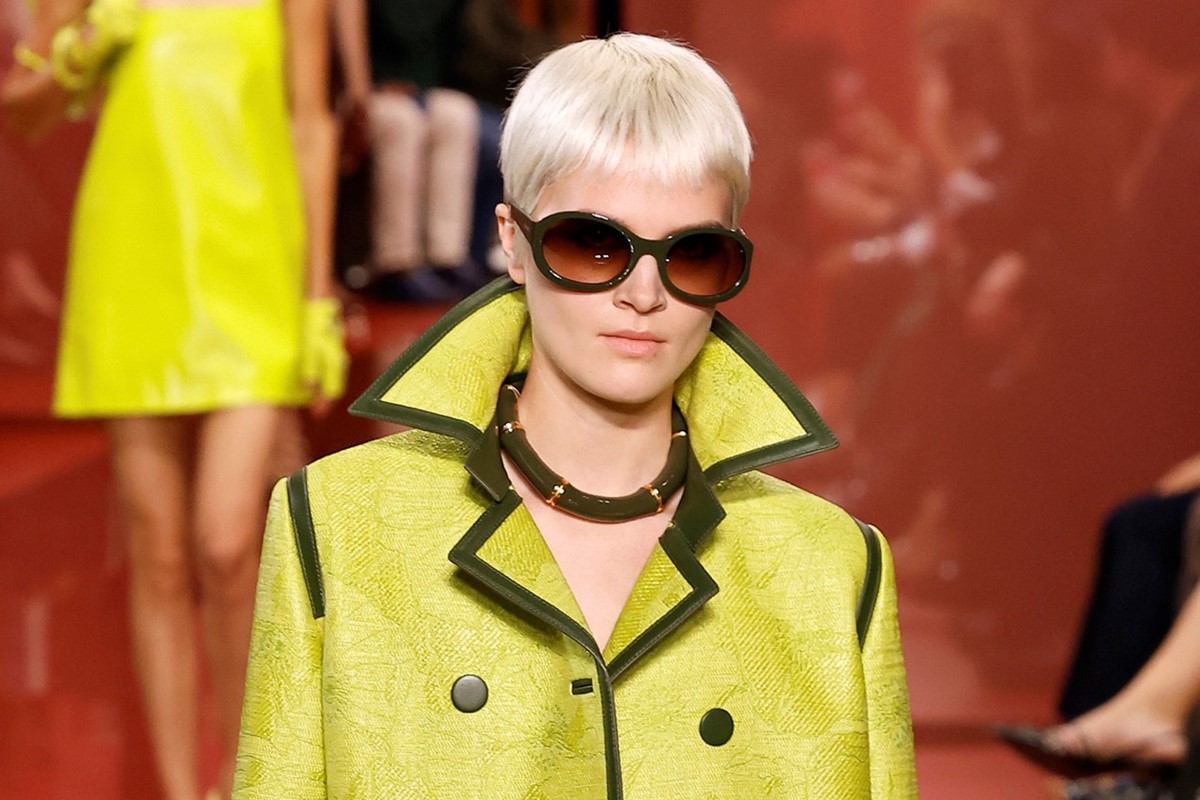
Rewrite
Unlike London, which only has a couple of blockbuster shows, Milan is full to the brim with billion-dollar houses which pull the biggest stars and put on the most extravagant shows. After Prada’s spectacular offering yesterday – which saw Raf and Mrs P wax lyrical about our internet algorithm obsession – today is the turn of Sabato De Sarno over at Gucci. Though this is already De Sarno’s sixth collection at the Italian house, it’s only his first anniversary at the brand, and to celebrate he’s taking us on a tour of his obsessions. For those of you who couldn’t make it down to Milan, we’ve got you covered – just scroll down for everything that went down at Gucci’s SS25 Casual Grandeur show.
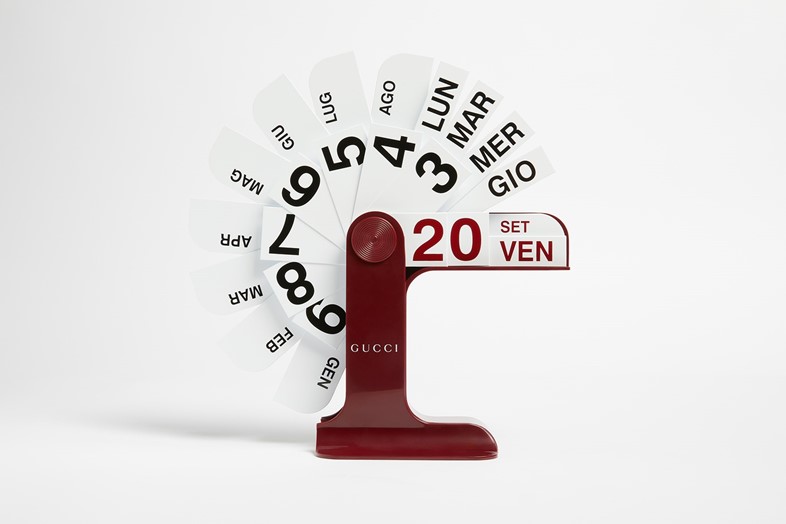
The first clue to what the show might be about was this season’s invite, taking the form of a rotating calendar in Ancora red. However, this wasn’t just any old calendar, but the Timor perpetual calendar designed by the prolific Italian artist Enzo Mari in 1967. Throughout his first year at Gucci, De Sarno has been dedicated to bringing together art and design, and this calendar is emblematic of that: the original Timor calendar has been included in the permanent collections of museums across the world, including the MoMA and the Smithsonian, which seems to corroborate De Sarno’s view that design can also be considered art. As well as this, the calendar’s 60s origin hinted at what was to come on the catwalk, and its anti-digital, analogue interface also sits perfectly in De Sarno’s design language, which is all about paying homage to the classics.
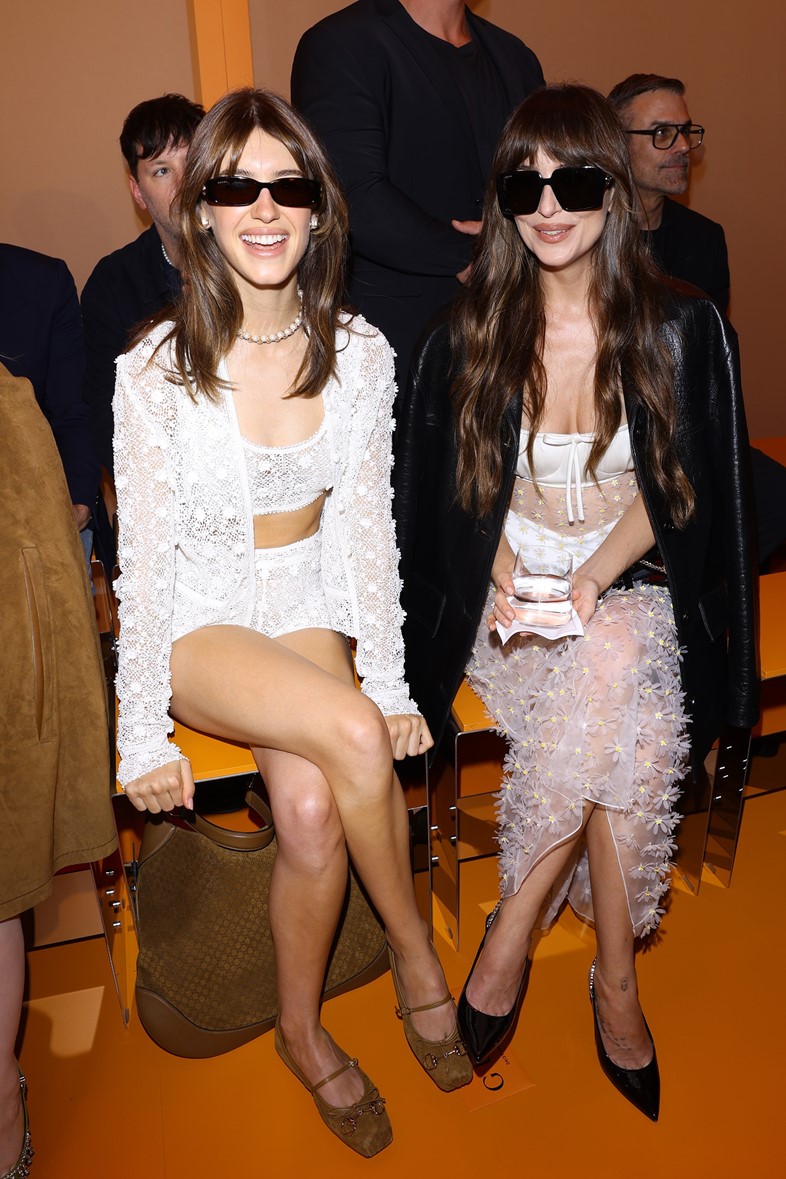
Since his tenure began in 2023, De Sarno has kept a lot of the same names and faces in his orbit, because, according to the designer, nothing is as important as family. Returning from last season’s women’s show were regulars like Solange, Kirsten Dunst, Julia Garner and Mark Ronson, plus newly minted fashion It-Girl Daisy Edgar-Jones. Also joining them on the front row were Debbie Harry, Dakota Johnson, Rina Sawayama, John Glacier and Raye, who also brought her mum along as well.
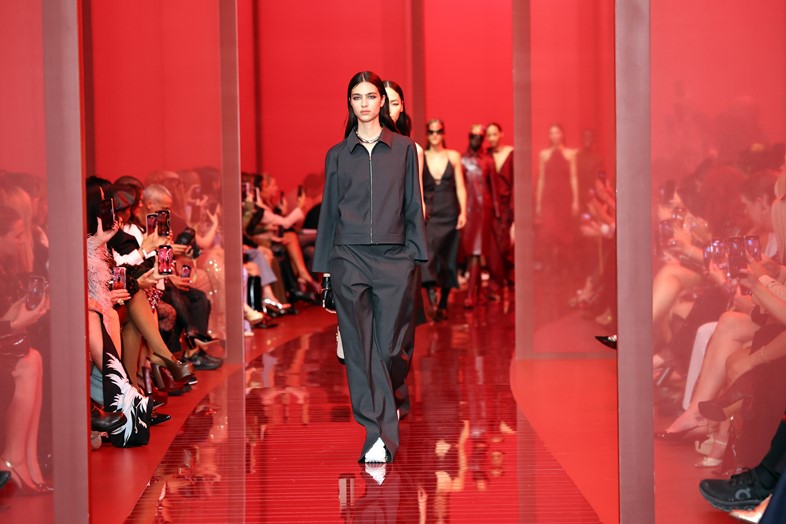
Just like the men’s offering back in June, the show saw Gucci build on its relationship with the legendary art and design museum Triennale de Milano. But this time around the venue was transformed into a long corridor of summer sunset hues (plain white, all the way through to the De Sarno-designed red, Gucci Rosso Ancora) via a gauzy web of semi-transparent rooms – part chic interior design choice, part mid-renovation building site. And, pulling through the 60s influences that were about to come, the catwalk floor was a red carpet reimagined in glossy red plastic.
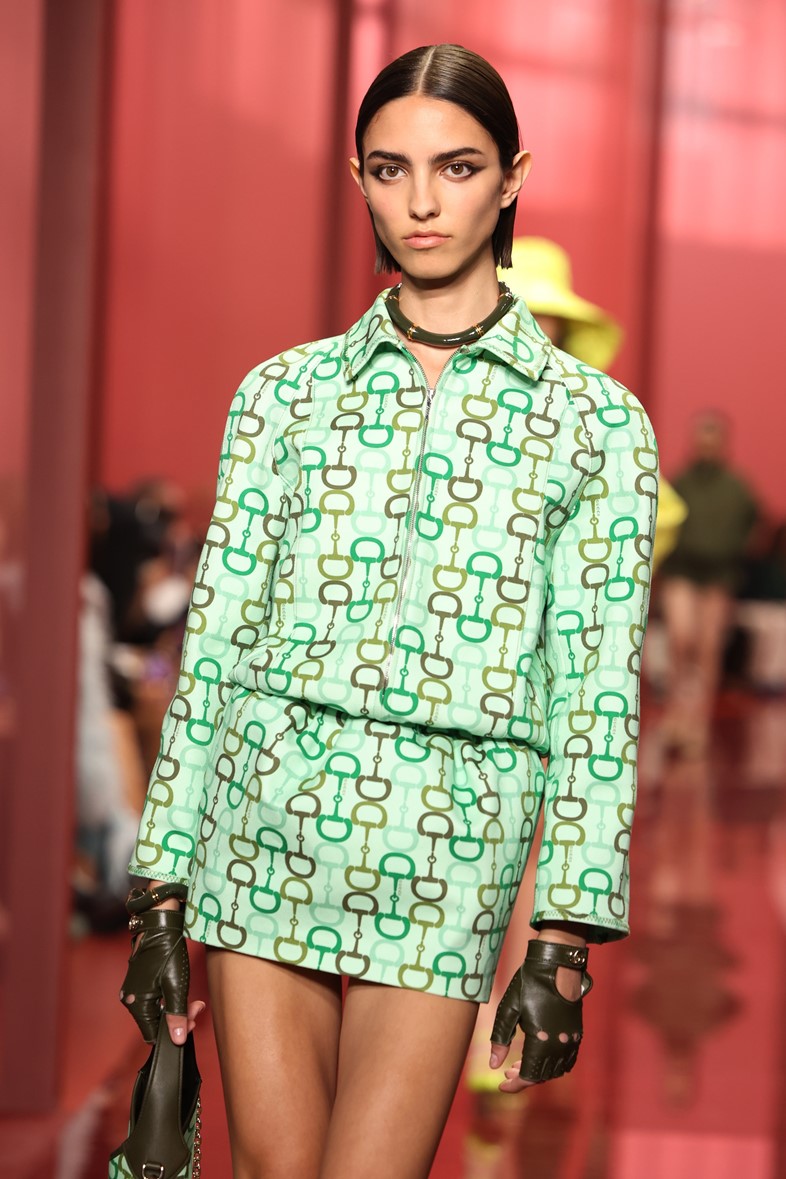
“A Casual Grandeur takes place through my obsessions”, said De Sarno before the show, singling just one of those out as his love for everything 1960s. On the catwalk, that decade was the collection’s north star, initially telegraphed through headscarves patterned by OG 60s illustrator Vittorio Accornero de Testa, for a look lifted straight out of a Hitchcock classic (bring back chic Sunday drives). Elsewhere, thigh-skimming shift dresses in cream and chartreuse channelled the swinging sensibilities of that hallowed decade, while more 60s references cropped up in wide-collared, chartreuse macs, and sequinned, glittering partywear.
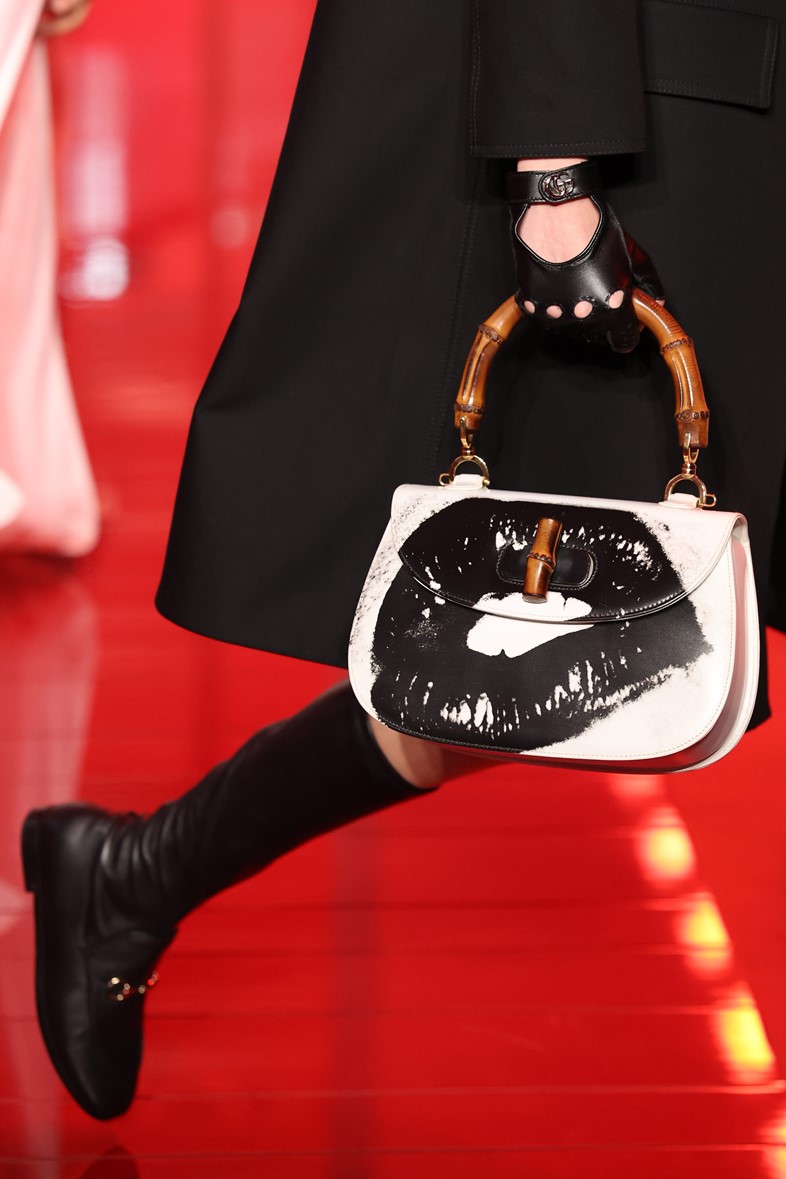
Shoes also got the retro treatment, with the familiar horsebit loafers built up into soft, calf-clutching leather boots, appearing alongside square-toed platforms. Elsewhere in the accessories department, Gucci’s 1947 Bamboo bag served as a key inspiration for sleek jewellery that intertwined with models’ limbs, as well as new handbags with variations on the classic bamboo detailing. We also saw some one-of-a-kind variations of the Bamboo bag, remixed by Japanese artists to celebrate the iconic accessory’s 60th anniversary in Japan. And, finally, at the less traditional end of the spectrum came the new, miniature Gucci Go bag, whose chunky gold hardware snaked around the cut-out knuckles of fingerless leather biker gloves.
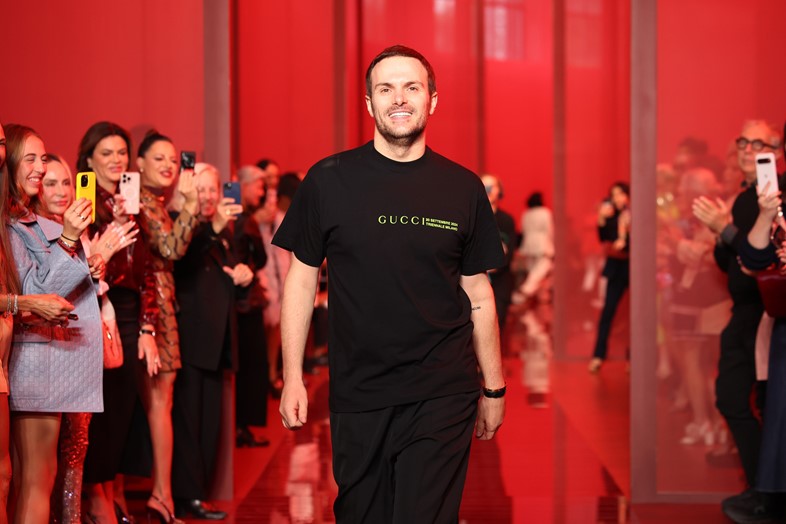
Where AW24 was all about exploring De Sarno’s dreamland, the designer’s statement on this year’s collection emphasises an iterative approach, grounded in his growing history with the house. “This collection shows an accomplished journey of construction,” he says. “Moment after moment, I have built my ideas for Gucci.” This means building on its heritage of “casual grandeur” (to use his favourite phrase of the season), filtered through his own irreverent attitude.
If the designs are a continuation of Gucci and De Sarno’s history, though – and possess a certain timeless quality because of that – they also exist firmly in the present. The collection, De Sarno explains, is a tribute to “a precise moment in time. A moment to seize and live to the fullest. It’s the moment the sun dives into the sea at the end of an August day. It’s the moment we find ourselves.” It also serves as an invitation to “stop [and] seek your own moment”. In the midst of fashion season, this might feel like an impossible task, but it’s not a bad piece of advice. Stop reading this. Go and watch a sunset.
in HTML format, including tags, to make it appealing and easy to read for Japanese-speaking readers aged 20 to 40 interested in fashion. Organize the content with appropriate headings and subheadings (h1, h2, h3, h4, h5, h6), translating all text, including headings, into Japanese. Retain any existing
tags from
Unlike London, which only has a couple of blockbuster shows, Milan is full to the brim with billion-dollar houses which pull the biggest stars and put on the most extravagant shows. After Prada’s spectacular offering yesterday – which saw Raf and Mrs P wax lyrical about our internet algorithm obsession – today is the turn of Sabato De Sarno over at Gucci. Though this is already De Sarno’s sixth collection at the Italian house, it’s only his first anniversary at the brand, and to celebrate he’s taking us on a tour of his obsessions. For those of you who couldn’t make it down to Milan, we’ve got you covered – just scroll down for everything that went down at Gucci’s SS25 Casual Grandeur show.

The first clue to what the show might be about was this season’s invite, taking the form of a rotating calendar in Ancora red. However, this wasn’t just any old calendar, but the Timor perpetual calendar designed by the prolific Italian artist Enzo Mari in 1967. Throughout his first year at Gucci, De Sarno has been dedicated to bringing together art and design, and this calendar is emblematic of that: the original Timor calendar has been included in the permanent collections of museums across the world, including the MoMA and the Smithsonian, which seems to corroborate De Sarno’s view that design can also be considered art. As well as this, the calendar’s 60s origin hinted at what was to come on the catwalk, and its anti-digital, analogue interface also sits perfectly in De Sarno’s design language, which is all about paying homage to the classics.

Since his tenure began in 2023, De Sarno has kept a lot of the same names and faces in his orbit, because, according to the designer, nothing is as important as family. Returning from last season’s women’s show were regulars like Solange, Kirsten Dunst, Julia Garner and Mark Ronson, plus newly minted fashion It-Girl Daisy Edgar-Jones. Also joining them on the front row were Debbie Harry, Dakota Johnson, Rina Sawayama, John Glacier and Raye, who also brought her mum along as well.

Just like the men’s offering back in June, the show saw Gucci build on its relationship with the legendary art and design museum Triennale de Milano. But this time around the venue was transformed into a long corridor of summer sunset hues (plain white, all the way through to the De Sarno-designed red, Gucci Rosso Ancora) via a gauzy web of semi-transparent rooms – part chic interior design choice, part mid-renovation building site. And, pulling through the 60s influences that were about to come, the catwalk floor was a red carpet reimagined in glossy red plastic.

“A Casual Grandeur takes place through my obsessions”, said De Sarno before the show, singling just one of those out as his love for everything 1960s. On the catwalk, that decade was the collection’s north star, initially telegraphed through headscarves patterned by OG 60s illustrator Vittorio Accornero de Testa, for a look lifted straight out of a Hitchcock classic (bring back chic Sunday drives). Elsewhere, thigh-skimming shift dresses in cream and chartreuse channelled the swinging sensibilities of that hallowed decade, while more 60s references cropped up in wide-collared, chartreuse macs, and sequinned, glittering partywear.

Shoes also got the retro treatment, with the familiar horsebit loafers built up into soft, calf-clutching leather boots, appearing alongside square-toed platforms. Elsewhere in the accessories department, Gucci’s 1947 Bamboo bag served as a key inspiration for sleek jewellery that intertwined with models’ limbs, as well as new handbags with variations on the classic bamboo detailing. We also saw some one-of-a-kind variations of the Bamboo bag, remixed by Japanese artists to celebrate the iconic accessory’s 60th anniversary in Japan. And, finally, at the less traditional end of the spectrum came the new, miniature Gucci Go bag, whose chunky gold hardware snaked around the cut-out knuckles of fingerless leather biker gloves.

Where AW24 was all about exploring De Sarno’s dreamland, the designer’s statement on this year’s collection emphasises an iterative approach, grounded in his growing history with the house. “This collection shows an accomplished journey of construction,” he says. “Moment after moment, I have built my ideas for Gucci.” This means building on its heritage of “casual grandeur” (to use his favourite phrase of the season), filtered through his own irreverent attitude.
If the designs are a continuation of Gucci and De Sarno’s history, though – and possess a certain timeless quality because of that – they also exist firmly in the present. The collection, De Sarno explains, is a tribute to “a precise moment in time. A moment to seize and live to the fullest. It’s the moment the sun dives into the sea at the end of an August day. It’s the moment we find ourselves.” It also serves as an invitation to “stop [and] seek your own moment”. In the midst of fashion season, this might feel like an impossible task, but it’s not a bad piece of advice. Stop reading this. Go and watch a sunset.
and integrate them seamlessly into the new content without adding new tags. Ensure the new content is fashion-related, written entirely in Japanese, and approximately 1500 words. Conclude with a “結論” section and a well-formatted “よくある質問” section. Avoid including an introduction or a note explaining the process.


